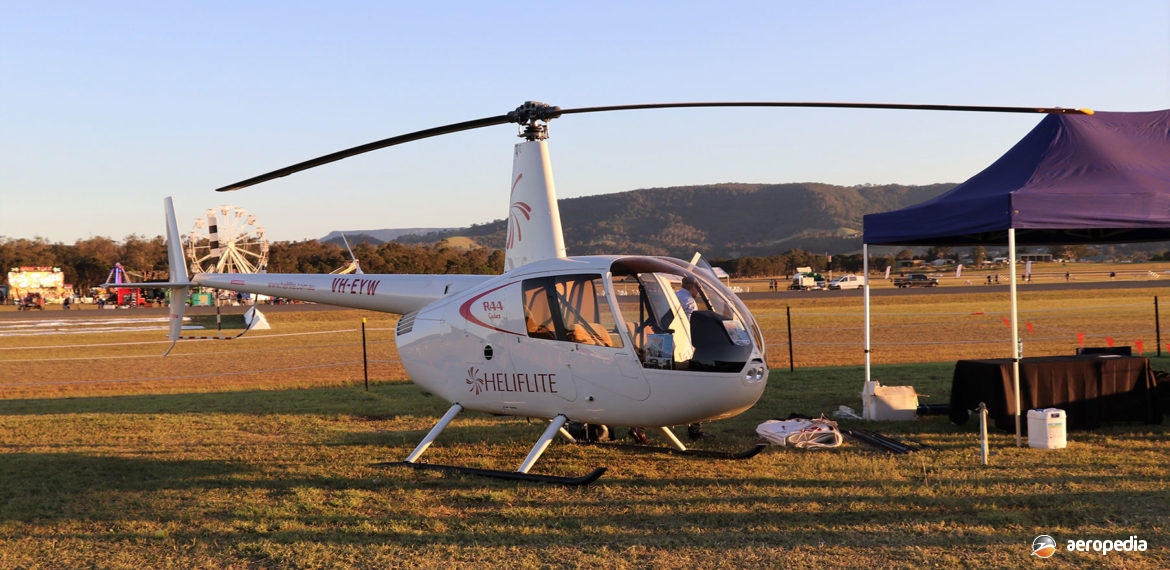Photograph:
Robinson R-44 Cadet VH-EYW (c/n 30032) at Albion Park, NSW in May 2018 (David C Eyre)
Country of origin:
United States of America
Description:
Two-seat utility and training helicopter
Power Plant:
One 194 kw (260 hp) Lycoming O-540-F1B5 six-cylinder horizontally-opposed air-cooled engine de-rated to 157 kw (210 hp) for take-off and 138 kw (185 hp) continuous
Specifications:
- Rotor diameter: 10.06 m (33 ft)
- Length: 11.67 m (38 ft 3 in)
- Height: 3.28 m (10 ft 9 in)
- Max cruising speed: 204 km/h (127 mph)
- Hovering ceiling out of ground effect at max weight: 1,600 m (5,250 ft)
- Hovering ceiling in ground effect: 2,667 m (8,750 ft)
- Max operating altitude: 4,267 m (14,000 ft)
- Fuel capacity: 176 litres (38.7 imp gals)
- Rate of climb: 305 m/min (1,000 ft/min)
- Empty weight: 650 kg (1,432 lb)
- Loaded weight: 996 kg (2,200 lb)
History:
In 2015 the Robinson Helicopter Co announced it planned to produce a two-seat variant of the R-44 called the Cadet which would be suitable for a wide variety of utilitarian applications, but mainly aimed at the training market. Work on the design commenced in November that year and the new aircraft retained the same basic airframe, rotor system and Lycoming engine as the R-44 Raven but the rear seats were removed and the rear compartment reconfigured to carry cargo. The max gross weight was 996 kg (2,200 lb) – which was 91 kg (200 lb) less than the Raven – and the engine was de-rated to 157 kw (210 hp) for take-off and 138 kw (185 hp) continuous.
A new muffler system was designed and installed to reduce the aircraft’s noise signature when flying over built-up areas. A range of optional equipment was made available, this including air-conditioning, an autopilot, and avionic packages optimised for customer requirements. The new machine was displayed initially at the US Helicopter Expo 2016. Despite the reduced power, the Cadet, being lighter, is able to perform better at higher altitudes, and the time between overhauls of the engine have been increased from 2,200 hours to 2,400 hours, providing a saving in costs for the training market.
The first two examples of the type were imported to Australia by the distributor, Heliflite Pty Ltd of Georges Hall, NSW becoming VH-CLX³ (c/n 30002), this machine later being the first production machine delivered to GBR Helicopters of Mareeba, QLD, and VH-LCH³ (c/n 30003) on 8 July 2016. A further example became VH-NYD³ (c/n 30010) in December 2016.

